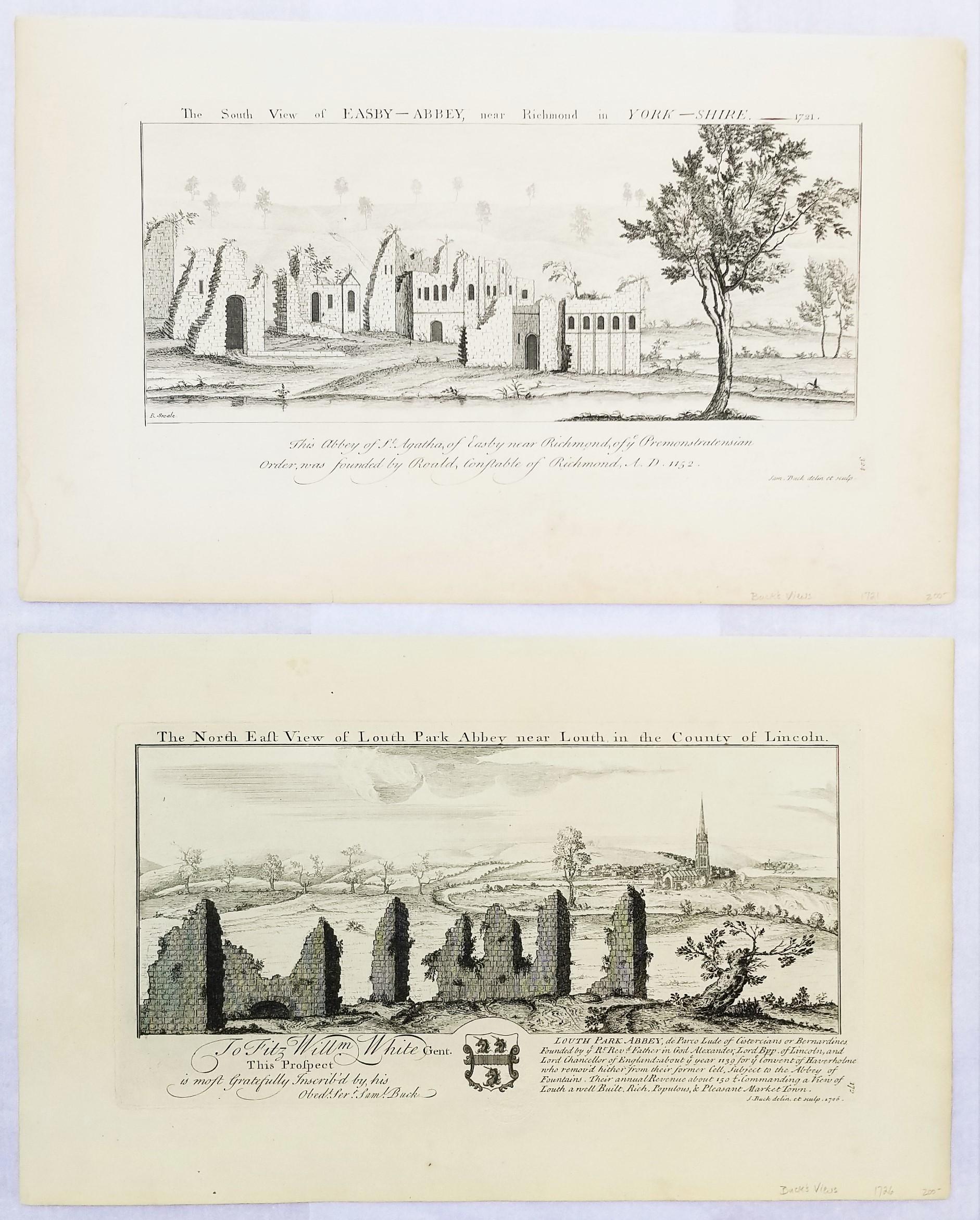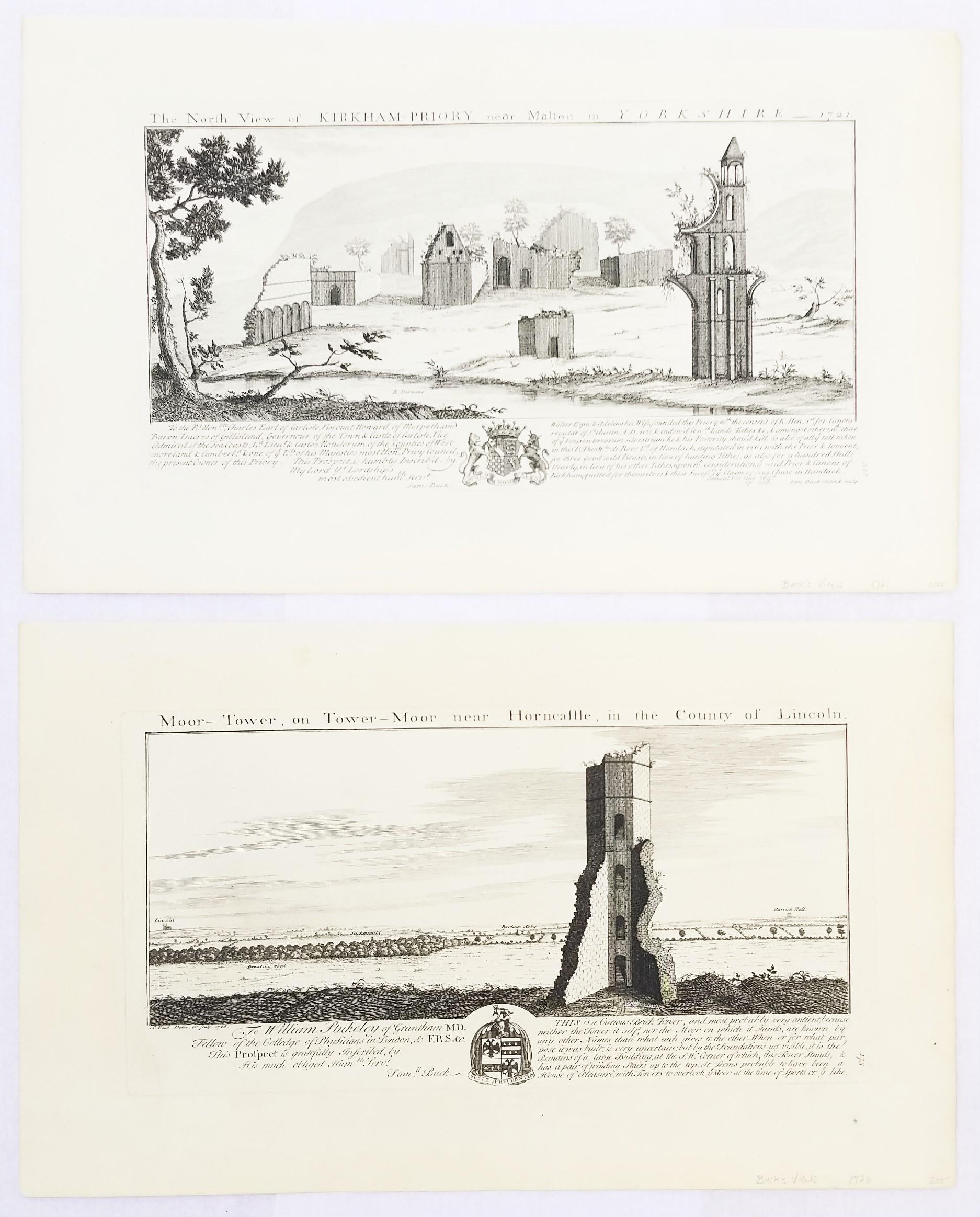Items Similar to 18th Century Engraving "Attack with a Battering Ram" by Montfaucon
Want more images or videos?
Request additional images or videos from the seller
1 of 13
Bernard de Montfaucon18th Century Engraving "Attack with a Battering Ram" by Montfaucon1719
1719
About the Item
This early original copper-plate engraving entitled "Attaque avec le Belier" from 'L'antiquité expliquée et représentée en figures' (Antiquity Explained and Represented in Diagrams), published in Paris in 1719 by Bernard de Montfaucon. It depicts an ancient Roman bas relief scene illustrating a Roman method of attacking a foe with a battering ram.
This early 18th century engraving is presented in an attractive ornate black wood frame with a cream-colored double mat with a thin black inner mat. It is glazed with plexiglass. The print, frame, mat and glazing are in excellent condition.
Dom Bernard de Montfaucon (1655-1741) was a French Benedictine monk of the Congregation of Saint Maur. He was an academic scholar who founded the discipline of palaeography (the study of old handwriting and texts so that ancient manuscripts can be deciphered, read and studied). He is also regarded as one of the founders of modern archaeology. In 1719, Montfaucon was named by Philippe II, Duke of Orléans and younger brother of King Louis XIV to the Académie des Inscriptions et Belles-Lettres. Also in 1719, after the death of the Jesuit priest, Michel Le Tellier (1643-1719), confessor to the late King Louis XIV, Montfaucon then became confessor to the young King Louis XV.
- Creator:Bernard de Montfaucon (1655 - 1714)
- Creation Year:1719
- Dimensions:Height: 21.88 in (55.58 cm)Width: 25.5 in (64.77 cm)Depth: 0.88 in (2.24 cm)
- Medium:
- Movement & Style:
- Period:
- Condition:
- Gallery Location:Alamo, CA
- Reference Number:
About the Seller
5.0
Platinum Seller
These expertly vetted sellers are 1stDibs' most experienced sellers and are rated highest by our customers.
Established in 2011
1stDibs seller since 2019
233 sales on 1stDibs
Typical response time: 1 hour
- ShippingRetrieving quote...Ships From: Alamo, CA
- Return PolicyA return for this item may be initiated within 7 days of delivery.
More From This SellerView All
- Hand Colored 18th Century Homann Map of Austria Including Vienna & the DanubeBy Johann Baptist HomannLocated in Alamo, CA"Archiducatus Austriae inferioris" is a hand colored map of Austria created by Johann Baptist Homann (1663-1724) and published in Nuremberg, Germany in 1728 shortly after his death. ...Category
Early 18th Century Old Masters Landscape Prints
MaterialsEngraving
- Giovanni Piranesi Etching of Ancient Roman Architecture, 18th CenturyBy Giovanni Battista PiranesiLocated in Alamo, CA"Veduta del Sepolcro della Famiglia Plauzia per la Strada Che Conduce da Roma a Tivoli vicino a Ponte Lugano" from "Le Antichità Romane" (Roman Antiquities), one of the most famous works by Piranesi. "Antichita" illustrates the tombs along the Appian Way...Category
Early 18th Century Old Masters Figurative Prints
MaterialsEtching, Engraving, Drypoint
- Canterbury: An Original 16th C. Framed Hand-colored Map by Braun & HogenbergBy Franz HogenbergLocated in Alamo, CAThis is a framed 16th century map and city view of Canterbury, England entitled "Cantuarbury" by Braun & Hogenburg, from their famous landmark atlas of city views 'Civitates Orbis Terrarum' (Atlas of the Cities of the World), which was first published in Cologne, Germany in 1572. The map of Canterbury was first published in 1588. It depicts a detailed birdseye view of the completely walled and fortified city of Canterbury, with its cathedral the most prominent feature. The coat of arms of England, Canterbury, and the Archbishop of Canterbury are included. This beautifully hand-colored map is presented in a gold-colored wood frame with a beaded inner trim and a paprika-colored mat that highlights details in the map. The frame measures 18.75" high by 22.25" wide by 0.875" deep. There is a central vertical fold, as issued. The map is in excellent condition. Braun and Hogenberg's 'The Civitates Orbis Terrarum' was the second atlas of maps ever published and the first atlas of cities and towns of the world. It is one of the most important books published in the 16th century. Most of the maps in the atlas were engraved by Franz Hogenberg and the text, with its descriptions of the history and additional factual information of the cities, was written by a team of writers and edited by Georg Braun. The work contained 546 bird-eye views and map views of cities and towns from all over the world. It gave graphic representation of the main features of the illustrated cities and towns, including the buildings and streets. Although the ordinary buildings are stylized, the principal buildings are reproduced from actual drawings created on location. The principal landmarks and streets can still be recognized today. In addition, the maps often include the heraldic arms of the city, the nature of the surrounding countryside, the important rivers, streams and harbors, even depicting stone bridges, wooden pontoons, flat-bottomed ferries, ships and working boats, wharves and jetties, as well as land-based activities, including horsemen, pedestrians, wagons, coaches, and palanquins. Small vignettes are often included which illustrate the trade, occupations and habits of the local inhabitants, such as agriculture, paper-making and textiles, as well as local forms of punishment, such as gibbets, wheels, floggings etc. Large figures dressed in their local costume are often presented out of proportion in the foreground. The aim of the authors was to give as much information as possible in a pleasing visual form. They succeeded in creating maps that were both informative and decorative works of art. The atlas is a wonderful glimpse of life in medieval Europe. Georg Braun (1541-1622) was German Catholic...Category
16th Century Old Masters Landscape Prints
MaterialsEngraving
- Meissen, Germany : A Large Framed 18th Century Map by Petrus SchenkLocated in Alamo, CAThis is a hand-colored 18th century map of the Meissen region of Germany, entitled "Geographischer Entwurff Derer Aemmter Meissen als Creys-Procuratur-Schul-und Stiffts-Ammt benebst ...Category
Mid-18th Century Old Masters Landscape Prints
MaterialsEngraving
- Northern Italy: A 16th Century Hand-colored Map by Abraham OrteliusBy Abraham OrteliusLocated in Alamo, CAThis is a framed 16th century hand-colored copperplate map of northern Italy entitled "Veronae Urbis Territorium a Bernardo Bragnolo Descriptium" by Abraham Ortelius from his atlas "Theatrum Orbis Terrarum", which was the first modern atlas of the world, with the first volume published in 1570. This map was part of a subsequent volume, published in Antwerp in 1584. It was based on an earlier map by Bernardo Brognoli. This beautiful map of northern Italy is focussed on Verona and its environs, including Mantua. Lake Garda and the South Tyrol mountains are prominently depicted. There is a very large striking cartouche in the upper left and a decorative distance scale in the lower right. This striking hand-colored map of northern Italy is presented in a gold-colored wood frame and an olive green-colored mat. It is glazed with UV conservation glass. All mounting materials used are archival. The frame measures 21.5" high by 28" wide by 0.75" deep. There is a central vertical fold, as issued, with slight separation of the lower portion of the fold. There are faint spots in the upper and right margins, but the map is otherwise in very good condition. Abraham Ortelius (also known as Ortels, Orthellius, and Wortels) (1527-1598) was a Dutch cartographer, geographer, and cosmographer. He began his career as a map colorist. In 1547 he entered the Antwerp guild of St Luke as an "illuminator of maps". He had an affinity for business from an early age and most of his journeys before 1560, were for business. He was a dealer in antiques, coins, maps, and books. His business income allowed him to acquire an extensive collection of medals, coins, and antiques, as well as a large library of books...Category
16th Century Old Masters Landscape Prints
MaterialsEngraving
- Frankfort, Germany: A 16th Century Hand-colored Map by Braun & HogenbergBy Franz HogenbergLocated in Alamo, CAThis is a 16th century original hand-colored copperplate engraved map of Frankfort, Germany entitled "Francenbergum, vel ut alij Francoburgum Hassiae Opp" by Georg Braun & Franz Hogenberg, from their famous city atlas "Civitates Orbis Terrarum", published in Cologne, Germany in 1595. This is an English translation of an excerpt from the original text in the atlas: "Frankenberg or, according to others, Francoburgum, a town in Hesse. Charlemagne vested the town of Frankenberg with many freedoms and privileges, which it still enjoys to this day, and on account of its valiant and victorious soldiers awarded a signet, upon which there formerly appeared a golden castle with a tower, together with the letter F and a golden crown. Frankenberg, seen here from the northeast, lies on a hill above the River Eder. The hillside is covered with fields neatly separated by bushes and fences. Soaring above the town is the massive Liebfrauenkirche, which was modelled on St Elizabeth's church in Marburg. The New Town was founded in 1335 at the foot of the hill (right) and merged with the Old Town as late as 1556. Frankenberg was founded by Conrad of Thuringia in 1233/34 to prevent the archbishops of Mainz from expanding their sphere of influence...Category
16th Century Old Masters Landscape Prints
MaterialsEngraving
You May Also Like
- "Oakham Castle" and "Nottingham Park/Castle" from "Buck's Antiquities" /// UKBy Samuel & Nathaniel BuckLocated in Saint Augustine, FLArtist: Samuel and Nathaniel Buck (English, 1696-1779) and (?-1759/1774) Title: "Oakham Castle" (Plate 242) and "Nottingham Park/Castle" (Plate 226) Portfolio: Buck's Antiquities or ...Category
1720s Old Masters Landscape Prints
MaterialsLaid Paper, Engraving, Intaglio
- "Torksey Hall" and "Newark Castle" from "Buck's Antiquities" /// Architecture UKBy Samuel & Nathaniel BuckLocated in Saint Augustine, FLArtist: Samuel and Nathaniel Buck (English, 1696-1779) and (?-1759/1774) Title: "Torksey Hall" (Plate 179) and "Newark Castle" (Plate 226) Portfolio: Buck's Antiquities or Venerable ...Category
1720s Old Masters Landscape Prints
MaterialsLaid Paper, Engraving, Intaglio
- "Cockersand Abbey" and "Sandal Castle" from "Buck's Antiquities" /// British ArtBy Samuel & Nathaniel BuckLocated in Saint Augustine, FLArtist: Samuel and Nathaniel Buck (English, 1696-1779) and (?-1759/1774) Title: "Cockersand Abbey" (Plate 148) and "Sandal Castle" (Plate 340...Category
1720s Old Masters Landscape Prints
MaterialsLaid Paper, Engraving, Intaglio
- "Louth Park Abbey" and "Easby Abbey" from "Buck's Antiquities" /// ArchitectureBy Samuel & Nathaniel BuckLocated in Saint Augustine, FLArtist: Samuel and Nathaniel Buck (English, 1696-1779) and (?-1759/1774) Title: "Louth Park Abbey" (Plate 172) and "Easby Abbey" (Plate 324) Portfolio: Buck's Antiquities or Venerabl...Category
1720s Old Masters Landscape Prints
MaterialsLaid Paper, Engraving, Intaglio
- "Moor Tower" and "Kirkham Priory" from "Buck's Antiquities" /// Architecture UKBy Samuel & Nathaniel BuckLocated in Saint Augustine, FLArtist: Samuel and Nathaniel Buck (English, 1696-1779) and (?-1759/1774) Title: "Moor Tower" (Plate 173) and "Kirkham Priory" (Plate 328) Portfolio: Buck's Antiquities or Venerable R...Category
1720s Old Masters Landscape Prints
MaterialsLaid Paper, Engraving, Intaglio
- "Pendragon Castle" and "Lincoln Castle" from "Buck's Antiquities" /// British UKBy Samuel & Nathaniel BuckLocated in Saint Augustine, FLArtist: Samuel and Nathaniel Buck (English, 1696-1779) and (?-1759/1774) Title: "Pendragon Castle" (Plate 312) and "Lincoln Castle" (Plate 170) Portfolio: Buck's Antiquities or Vener...Category
1720s Old Masters Landscape Prints
MaterialsLaid Paper, Engraving, Intaglio
Recently Viewed
View AllMore Ways To Browse
Antique Prints Framed
Antique Print Framed
Reliefs Scenes
18th Century French Engraving
18th Century Engraving Framed
18th Century French Copper
French Copper 18th
18th Century Colored Engraving
Rams In Art
Original Copper Engraving Plate
King Louis Xiv
18th Century French Ornate
Framed Manuscript
King Louis Plater
French Priest
Bas Relief Framed Art
Ancient Bas Relief
Double Ram





